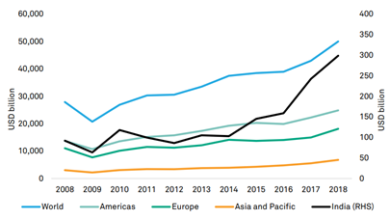
The second wave hit almost everyone by surprise when the government had almost declared a victory over Covid in late February/March and people lowered their guards in following Covid appropriate behavior.
The contagion started surging around late March in Mumbai, spreading like a wildfire in Maharashtra, Delhi, Karnataka and many other states by April. There were photographs of dead bodies floating in Ganga and unprecedented panic as people were dying in hospital and many people faced oxygen shortage.
The big cities and states which faced the second wave in the beginning have shown early signs of recovery but there are signs of rural penetrations of the virus, which can be a sign of worry as the rural healthcare infrastructure isn’t sufficient to handle the upsurge in cases. On the other hand there is less literacy among the rural people about the virus and healthcare.
In the starting phases of the disease it’s indistinguishable from the common flu, and as a result, people in the villages treat themselves with herbal/home remedies for a few days before even thinking of going to a public health center for a checkup.
This means that by the time they go and get tested and get the reports of the test which nearly takes one more day to finalize that a person is positive or not, as many as a minimum of 5 days are gone between the detection of the first symptoms and the commencement of Covid treatment. This difference between detection of the first symptom and commencement of the Covid treatment has proved to increase the severity of infection in the body which can be damaging.
During the first wave, the transit of infection caused by the virus didn’t have an easy passage to the rural areas but now there is a growing concern about smaller towns and rural areas where the virus is heading inside.
Incorrectly assumed countrywide herd immunity and lack of anticipation of the second wave became the Trojan horses by which the virus evaded rural defenses. It is now time to think and take quick actions to contain the spread of the virus in the villages.

There are states such as Kerala and Tamil Nadu which have strong healthcare systems that reach rural areas but many states in the central and northern India have a weak healthcare system, especially lacking physical strength in rural areas. Infrastructure, healthcare workforce, timely availability of medical supplies, population health literacy, and connectivity to higher levels of care are deficient in many districts.

What is needed now is proper awareness about the vaccination among the rural people and simultaneous upgrades in the rural health infrastructure, especially Primary Healthcare Centers (PHCs).
Since the vaccines are not readily available and are in short supply, primary healthcare teams should conduct household visits for symptom surveillance and case detection, timely testing, triage, and referral as needed, home care support and monitoring.
Engagement of the local community and ASHA healthcare workers is vital, hence, the community based organizations having grassroots presence can assist in the delivery of health and social services. Emergency transport systems should be organized with assurance of ability, affordability, and equity, to transport seriously ill patients to pre-determined advanced care clinics and hospitals.
Written By – Lakshay Khichar
Edited By – Sohini Roy
The post Covid Inside Rural India appeared first on The Economic Transcript.





